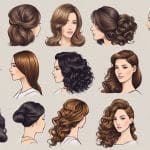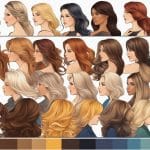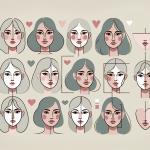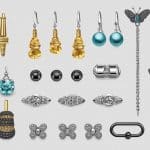Types Of Facial Hair
Facial hair has been a symbol of masculinity for centuries. From the ancient Greeks to the modern-day hipsters, men have been experimenting with different types of facial hair to express their individuality and style. This article will explore the different types of facial hair, including popular beard styles, mustache types, and unique and historical facial hair.
Fundamentals of Facial Hair
Before diving into the different types of facial hair, it’s important to understand the basics. Facial hair is hair that grows on the face, including the chin, cheeks, and upper lip region. The most common types of facial hair include beards, mustaches, and goatees. Each type of facial hair has its own unique style and grooming requirements.
Popular Beard Styles
Beards have been a popular facial hair style for centuries. From the classic full beard to the trendy stubble, there are many different beard styles to choose from. Some of the most popular beard styles include the full beard, the goatee, and the stubble. Each beard style has its own unique look and requires different levels of maintenance.
Key Takeaways
- Facial hair includes beards, mustaches, and goatees.
- Popular beard styles include the full beard, the goatee, and the stubble.
- Mustache types range from the classic handlebar to the trendy pencil mustache.
Fundamentals of Facial Hair
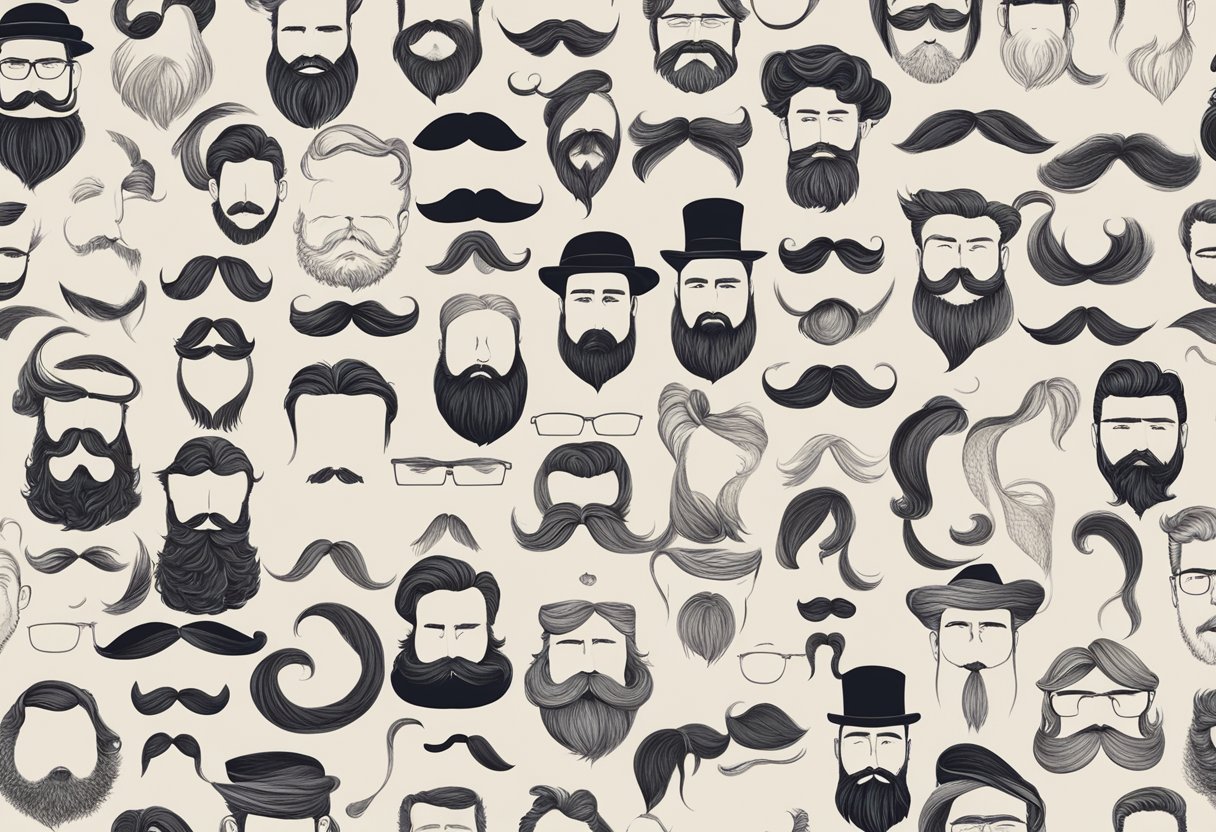
Facial hair is a prominent feature of a person’s appearance that can add character and personality to their overall look. Growing and maintaining facial hair requires a basic understanding of the fundamentals of facial hair growth patterns, face shapes, and the importance of maintenance.
Facial Hair Growth Patterns
Facial hair growth patterns are determined by the hair follicles on a person’s face. The density and thickness of facial hair vary depending on the individual’s genetics and hormonal levels. Typically, men have denser and thicker facial hair than women due to higher levels of testosterone.
Facial Hair and Face Shapes
The shape of a person’s face plays a crucial role in determining the type of facial hair that suits them. People with an oval face shape can experiment with different styles, while those with a square face shape should aim for a softer look. Those with a round face shape should avoid bushy beards and opt for a more defined look, while those with a triangular face shape should avoid styles that accentuate their jawline.
Importance of Maintenance
Maintaining facial hair is essential to keep it looking neat and well-groomed. Regular trimming with a trimmer or grooming tool can prevent split ends and promote healthy hair growth. It is also essential to keep the hair clean by washing it regularly with a mild shampoo and conditioner.
In conclusion, understanding the fundamentals of facial hair growth patterns, face shapes, and the importance of maintenance is crucial for achieving a well-groomed and stylish appearance. By following these basic principles, one can experiment with different styles and find a look that suits them best.
Popular Beard Styles
Facial hair has been a trend for many years, and it’s not going away anytime soon. There are many different beard styles to choose from, and each one can give a unique look to the wearer. In this section, we will discuss some of the most popular beard styles.
Full Beard
The full beard is a classic style that has been around for centuries. It is a thick, bushy beard that covers the entire area from the cheeks to the chin. The full beard is a great option for men who want a rugged, masculine look. This style requires regular maintenance, including trimming and shaping, to keep it looking neat and tidy.
Stubble
Stubble is a popular beard style that gives a rugged, masculine look without being too overbearing. It is a short, neatly trimmed beard that covers the face. Stubble is a great option for men who want a low-maintenance beard style. It requires minimal grooming and can be easily maintained with a beard trimmer.
Goatee Variations
The goatee is a classic beard style that has been around for many years. It is a small beard that is located on the chin. There are many variations of the goatee, including the classic goatee, the Van Dyke, and the Balbo. The classic goatee is a small beard that is located on the chin, while the Van Dyke is a combination of a mustache and a goatee. The Balbo is a combination of a mustache and a small beard that is located on the chin.
Sideburns and Mutton Chops
Sideburns and mutton chops are two popular beard styles that have been around for many years. Sideburns are a strip of hair that runs down the side of the face, while mutton chops are a thick, bushy beard that covers the cheeks and chin. Both styles require regular maintenance to keep them looking neat and tidy.
In addition to these popular beard styles, there are many other styles to choose from, including the ducktail, chinstrap beard, and many more. The key to finding the right beard style is to experiment with different styles and find the one that suits your face shape and personal style.
Mustache Types and Grooming
Facial hair has always played a significant role in shaping a man’s appearance and identity. Among the various facial hair styles, mustaches have stood the test of time, evolving into a symbol of style and masculinity. However, it is important to remember that grooming is key to maintaining a healthy and stylish mustache.
Classic Mustache Styles
Classic mustache styles include the Chevron, Handlebar, Pencil-Thin, and Thick Mustache. The Chevron is a thick and full mustache that extends beyond the edges of the upper lip. The Handlebar is a long and twisted mustache that curls upwards at the ends. The Pencil-Thin is a thin and narrow mustache that is trimmed to a fine point. The Thick Mustache is a dense and bushy mustache that covers the entire upper lip.
To groom a classic mustache, it is important to keep it clean and trimmed. Regularly washing the mustache with shampoo and conditioner can help prevent itchiness and dryness. Trimming the mustache with scissors or a trimmer can help maintain the desired shape and length.
Contemporary Mustache Trends
Contemporary mustache trends include the David Beckham Mustache, which is a combination of a Chevron and Handlebar mustache. It is a thick and full mustache with twisted ends that curl upwards. This style is perfect for those who want to make a bold statement.
To groom a contemporary mustache, it is important to keep it clean and styled. Regularly washing the mustache with shampoo and conditioner can help prevent itchiness and dryness. Styling the mustache with wax or gel can help maintain the desired shape and hold.
In conclusion, there are various mustache styles to choose from, and grooming is key to maintaining a healthy and stylish mustache. By following simple grooming tips and techniques, anyone can rock a mustache with confidence and style.
Unique and Historical Facial Hair
Cultural Significance
Facial hair has played a significant role in various cultures throughout history, often symbolizing power, masculinity, and social status. For example, in ancient Egypt, pharaohs were often depicted with beards as a sign of their divinity and authority. In India, facial hair is considered a sign of wisdom and spirituality, and many holy men grow beards as a sign of their devotion. Similarly, in Sikhism, facial hair is an important aspect of the religion and is seen as a way to honor God’s creation.
Iconic Facial Hair in History
Many historical figures have become known for their unique facial hair styles. One of the most iconic examples is Abraham Lincoln, who is often depicted with a full beard. Lincoln grew his beard in response to a letter he received from an 11-year-old girl suggesting he would look better with one. The beard quickly became a symbol of Lincoln’s presidency and is now synonymous with his image.
Another historical figure known for his facial hair is Italo Balbo, an Italian aviator and politician who is often depicted with a thick, well-groomed mustache. Balbo’s mustache became so famous that it was even referenced in a song by the Andrews Sisters.
During World War II, facial hair played a role in military culture, with many soldiers growing mustaches or beards as a way to boost morale and show solidarity. The Amish also have a long tradition of growing beards and mustaches as a symbol of their faith and commitment to simplicity.
In more recent times, musicians have become known for their unique facial hair styles. Frank Zappa, for example, is often associated with his distinctive mustache and soul patch, while the Van Dyke beard has become synonymous with the musician and actor, Johnny Depp. The English mustache, characterized by its upward-curled ends, is also a popular choice among musicians and actors, including Tom Selleck and John Waters.
Overall, facial hair has played an important role in culture and history, with many iconic figures becoming known for their unique styles. Whether it’s a full beard, a well-groomed mustache, or a quirky goatee, facial hair will continue to be an important aspect of personal style and identity.
Facial Hair Care and Grooming
Maintaining facial hair can be a challenge, but with the right tools and techniques, it can be an easy and enjoyable task. In this section, we’ll cover some tips for trimming and shaping, as well as hygiene and hair care.
Trimming and Shaping
Whether you have a well-groomed beard or prefer to stay clean-shaven, trimming and shaping are essential for maintaining a neat and polished appearance. A beard trimmer is a useful tool for achieving a consistent length, while a shaver can help keep the edges clean and defined.
When using a beard trimmer, it’s important to choose the right length setting based on your desired look. For patchy beards or whiskers, a shorter length may be more flattering, while longer lengths can add volume and texture. To shape your beard, use a comb to guide the trimmer along the edges and create a defined line.
For those who prefer a clean-shaven look, a razor such as Gillette can help achieve a smooth finish. It’s important to use a sharp blade and shave in the direction of hair growth to prevent irritation and ingrown hairs.
Hygiene and Hair Care
Just like the hair on your head, facial hair requires regular washing and conditioning to stay healthy and clean. Use a gentle cleanser to remove dirt and oil, and follow up with a conditioner to soften the hair and prevent dryness.
Moisturizing is also important for maintaining the texture and density of your facial hair. Apply a moisturizer or beard oil after washing to keep the hair hydrated and prevent breakage. For those with sensitive skin, it’s important to choose products that are free of irritants and fragrances.
In summary, maintaining facial hair requires a combination of trimming and shaping, as well as hygiene and hair care. By following these tips and using the right tools and products, anyone can achieve a well-groomed and polished appearance.

